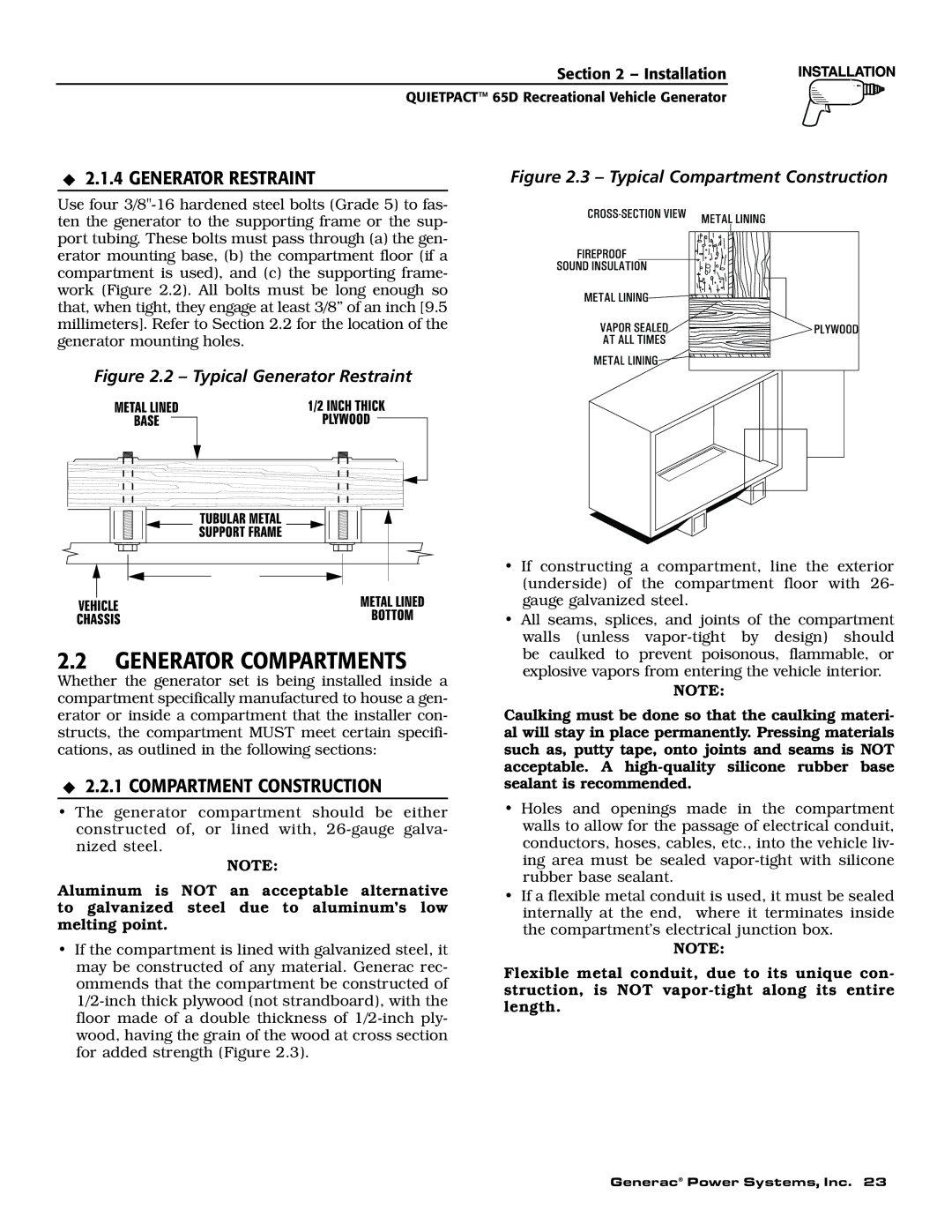
Section 2 – Installation
QUIETPACT™ 65D Recreational Vehicle Generator
◆ 2.1.4 GENERATOR RESTRAINT | Figure 2.3 – Typical Compartment Construction |
Use four
Figure 2.2 – Typical Generator Restraint
2.2GENERATOR COMPARTMENTS
Whether the generator set is being installed inside a compartment specifically manufactured to house a gen- erator or inside a compartment that the installer con- structs, the compartment MUST meet certain specifi- cations, as outlined in the following sections:
◆2.2.1 COMPARTMENT CONSTRUCTION
•The generator compartment should be either constructed of, or lined with,
NOTE:
Aluminum is NOT an acceptable alternative to galvanized steel due to aluminum’s low melting point.
•If the compartment is lined with galvanized steel, it may be constructed of any material. Generac rec- ommends that the compartment be constructed of
•If constructing a compartment, line the exterior (underside) of the compartment floor with 26- gauge galvanized steel.
•All seams, splices, and joints of the compartment
walls (unless
NOTE:
Caulking must be done so that the caulking materi- al will stay in place permanently. Pressing materials such as, putty tape, onto joints and seams is NOT acceptable. A
•Holes and openings made in the compartment walls to allow for the passage of electrical conduit, conductors, hoses, cables, etc., into the vehicle liv- ing area must be sealed
•If a flexible metal conduit is used, it must be sealed internally at the end, where it terminates inside the compartment’s electrical junction box.
NOTE:
Flexible metal conduit, due to its unique con- struction, is NOT
Generac® Power Systems, Inc. 23
